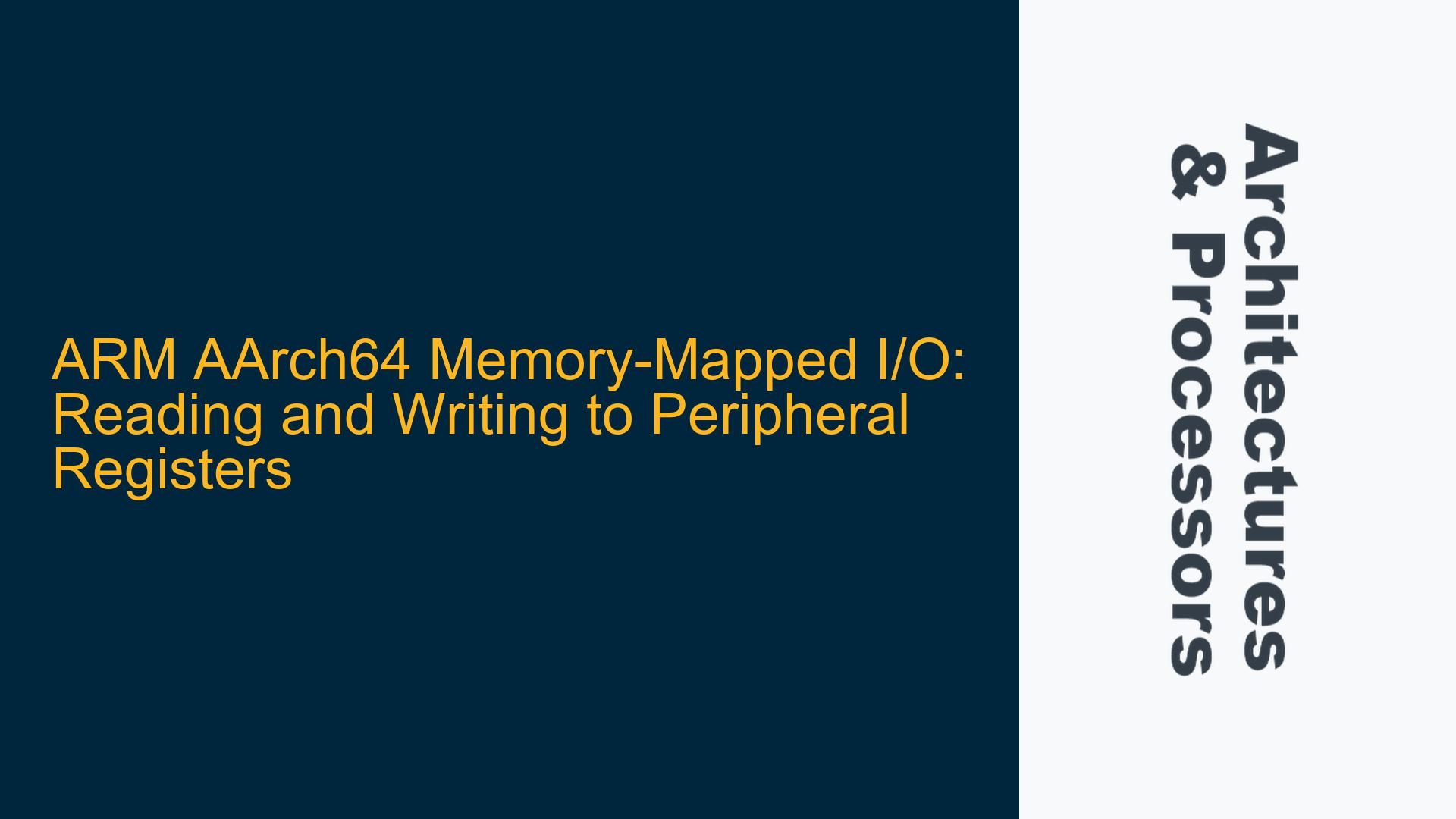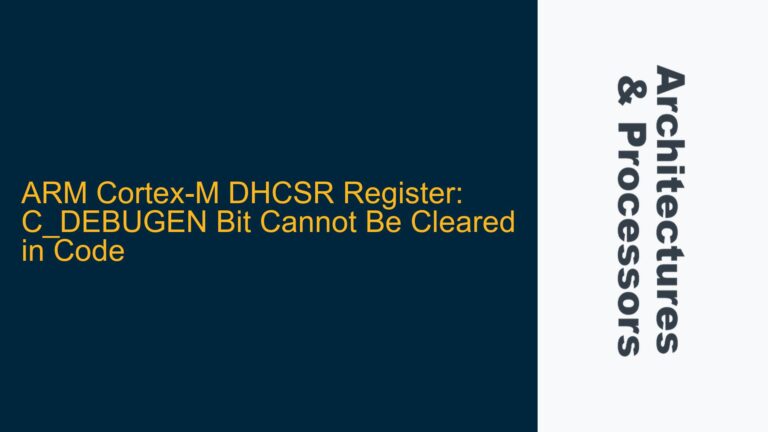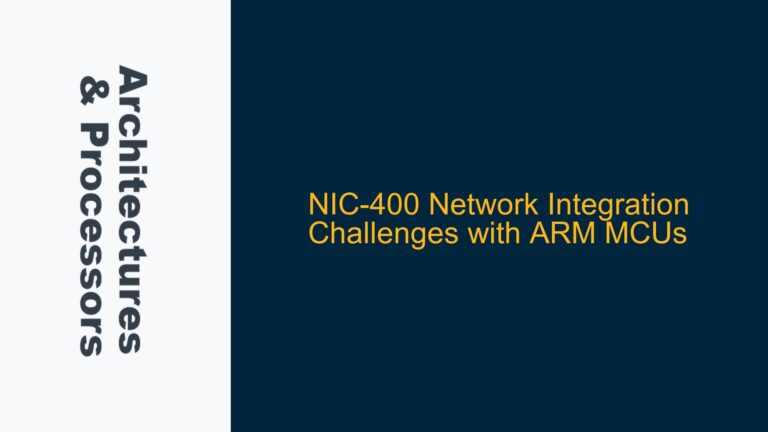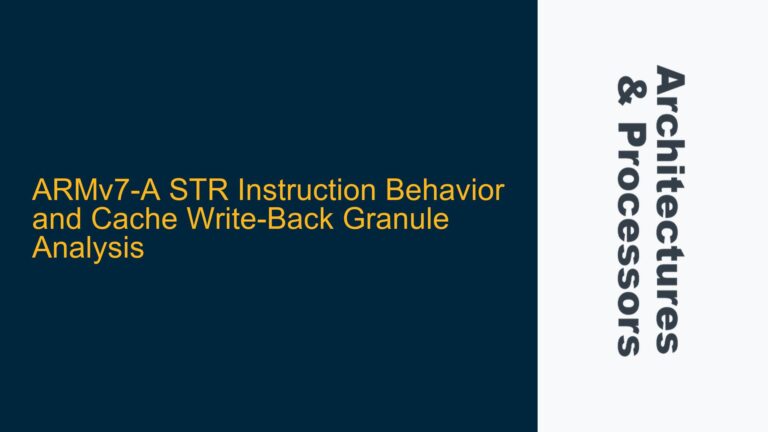ARM AArch64 Memory-Mapped I/O Architecture and Challenges
In ARM AArch64 architecture, input/output (I/O) operations are fundamentally different from traditional x86 architectures. Unlike x86, which employs a separate I/O address space and dedicated instructions like inb and outb, ARM uses a unified memory-mapped I/O approach. This means that peripherals such as UARTs, GPIOs, and timers are accessed as if they were memory locations. Each peripheral register is assigned a specific memory address, and reading or writing to these addresses directly controls the peripheral’s behavior.
The NS16550 UART, a common serial communication peripheral, is a prime example of a memory-mapped I/O device. To interact with it, you must understand its register layout and the memory addresses assigned to each register. For instance, the UART’s transmit data register (TXDATA) might be located at a base address plus an offset, such as 0x60002000 + 0x00. Writing a byte to this address sends data out through the UART, while reading from it retrieves received data.
However, this memory-mapped approach introduces several challenges. First, the address space for peripherals is often distinct from general-purpose memory, requiring careful handling of physical versus virtual addresses. Second, caching can interfere with I/O operations, as writes to memory-mapped registers must be immediately visible to the hardware. Third, the alignment and size of peripheral registers vary; some may be 8-bit, 16-bit, or 32-bit, and they may be packed or aligned to specific boundaries.
Understanding these architectural nuances is critical for implementing reliable I/O operations on ARM AArch64 systems. Misalignment, incorrect addressing, or improper cache management can lead to subtle bugs that are difficult to diagnose.
Misalignment, Caching, and Addressing Issues in Memory-Mapped I/O
One of the most common pitfalls in ARM AArch64 memory-mapped I/O is misalignment. Peripheral registers often have specific alignment requirements. For example, a 32-bit register might need to be accessed at a 4-byte aligned address. Attempting to read or write to an unaligned address can result in undefined behavior or hardware faults. This is particularly problematic when dealing with legacy peripherals that use 8-bit registers but are mapped to 32-bit aligned addresses.
Caching is another significant concern. ARM processors typically employ caches to improve memory access performance. However, cached memory accesses are inappropriate for memory-mapped I/O because peripheral registers must be accessed directly, without delay. If a write to a UART transmit register is cached, the data might not be sent immediately, leading to communication errors. Similarly, a cached read from a receive register might return stale data. To address this, ARM provides mechanisms like memory barriers and uncached memory mappings to ensure that I/O operations bypass the cache.
Addressing issues also arise due to the distinction between physical and virtual memory. In a typical ARM AArch64 system, the operating system manages virtual memory, translating virtual addresses to physical addresses. However, peripheral registers are often accessed using physical addresses. This requires either configuring the memory management unit (MMU) to map peripheral addresses into the virtual address space or using special instructions to access physical memory directly. Failure to handle this correctly can result in accessing the wrong memory location or triggering a segmentation fault.
Additionally, the size of peripheral registers can vary. Some devices use 8-bit registers, while others use 16-bit or 32-bit registers. This inconsistency must be accounted for when writing code to interact with peripherals. For example, writing a 32-bit value to an 8-bit register might overwrite adjacent registers, causing unintended side effects.
Implementing Memory-Mapped I/O Operations with Proper Cache and Alignment Handling
To implement memory-mapped I/O operations correctly on ARM AArch64, you must address alignment, caching, and addressing issues. Here’s a step-by-step guide to reading and writing peripheral registers, using the NS16550 UART as an example.
Step 1: Define the Peripheral Register Layout
Start by defining a structure that represents the UART’s register layout. This provides a convenient way to access registers using symbolic names rather than hard-coded addresses. For the NS16550 UART, the structure might look like this:
typedef struct {
volatile uint8_t RXDATA; // Receive Data Register
volatile uint8_t TXDATA; // Transmit Data Register
volatile uint8_t STATUS; // Status Register
volatile uint8_t CTRLA; // Control Register A
// Additional registers as needed
} UART_Registers;
The volatile keyword ensures that the compiler does not optimize away accesses to these registers, as their values can change at any time due to hardware events.
Step 2: Map the Peripheral Address
Next, map the peripheral’s base address to the register structure. This address is typically provided in the hardware documentation. For example, if the UART is located at 0x60002000, you can define a pointer to the register structure:
#define UART_BASE_ADDRESS 0x60002000
UART_Registers *uart = (UART_Registers *)UART_BASE_ADDRESS;
If the system uses virtual memory, you may need to map the physical address to a virtual address using the MMU. This step is platform-specific and often handled by the operating system or bootloader.
Step 3: Handle Caching
To ensure that I/O operations bypass the cache, you can use uncached memory mappings or explicit cache management instructions. On ARM AArch64, the DC CIVAC (Data Cache Clean and Invalidate by Virtual Address to Point of Coherency) instruction can be used to flush the cache for a specific memory range. Alternatively, you can configure the MMU to mark the peripheral’s memory region as uncached.
Here’s an example of using a memory barrier to ensure that writes to the UART transmit register are immediately visible:
static inline void uart_write_byte(UART_Registers *uart, uint8_t data) {
uart->TXDATA = data;
__asm volatile("dsb sy" ::: "memory"); // Data Synchronization Barrier
}
The dsb sy instruction ensures that all previous memory accesses are completed before proceeding, preventing reordering that could interfere with I/O operations.
Step 4: Implement Read and Write Functions
With the register structure and caching handled, you can implement functions to read and write UART registers. For example:
static inline uint8_t uart_read_byte(UART_Registers *uart) {
return uart->RXDATA;
}
static inline void uart_write_byte(UART_Registers *uart, uint8_t data) {
uart->TXDATA = data;
__asm volatile("dsb sy" ::: "memory"); // Ensure write completion
}
These functions provide a clean interface for interacting with the UART, abstracting away the low-level details of memory-mapped I/O.
Step 5: Handle Alignment and Register Sizes
When dealing with peripherals that use non-standard register sizes or alignment, you may need to adjust your code accordingly. For example, if a peripheral uses 8-bit registers but maps them to 32-bit aligned addresses, you can use pointer arithmetic to access the correct byte within the word:
static inline uint8_t read_8bit_register(volatile uint32_t *base, int offset) {
return *((volatile uint8_t *)((uintptr_t)base + offset));
}
This approach ensures that you access the correct byte without violating alignment requirements.
Step 6: Test and Debug
Finally, thoroughly test your I/O operations to ensure they work as expected. Use a debugger or logic analyzer to verify that data is being sent and received correctly. Pay particular attention to timing issues, as delays or race conditions can cause intermittent failures.
By following these steps, you can implement reliable memory-mapped I/O operations on ARM AArch64 systems, even when dealing with challenging peripherals like the NS16550 UART. Proper handling of alignment, caching, and addressing is essential for ensuring robust and efficient communication with hardware devices.






